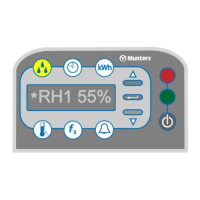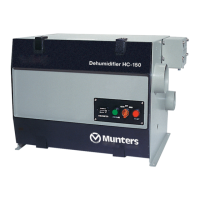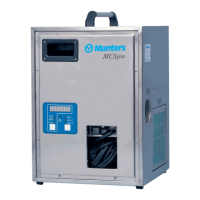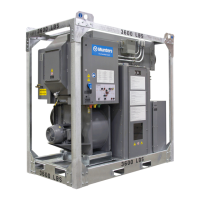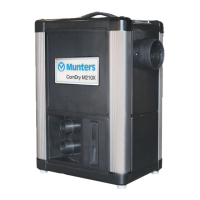What to do if Munters DRYCOOL RENTAL HCUb Dehumidifier unit will not run?
- ZzacharybrooksAug 13, 2025
If the Munters Dehumidifier unit won't run, and the microprocessor alarm button is illuminated red, consult Appendix E for alarm descriptions. If there's no alarm light, verify the unit's power supply for correct voltage on all three phases and proper phasing, as the phase protection relay prevents operation with incorrect phasing.




